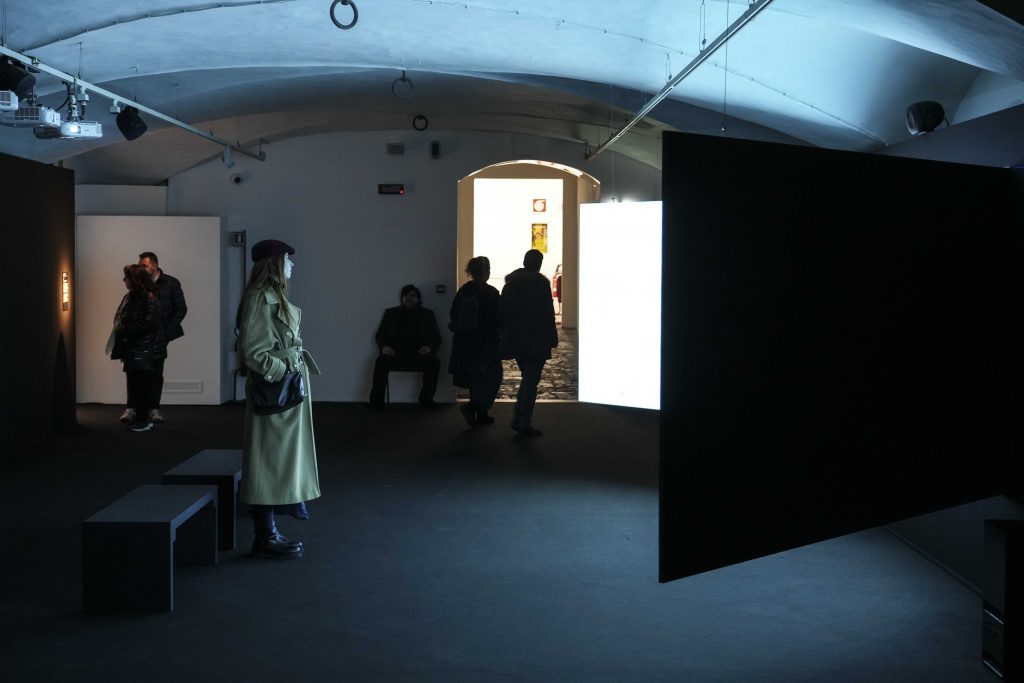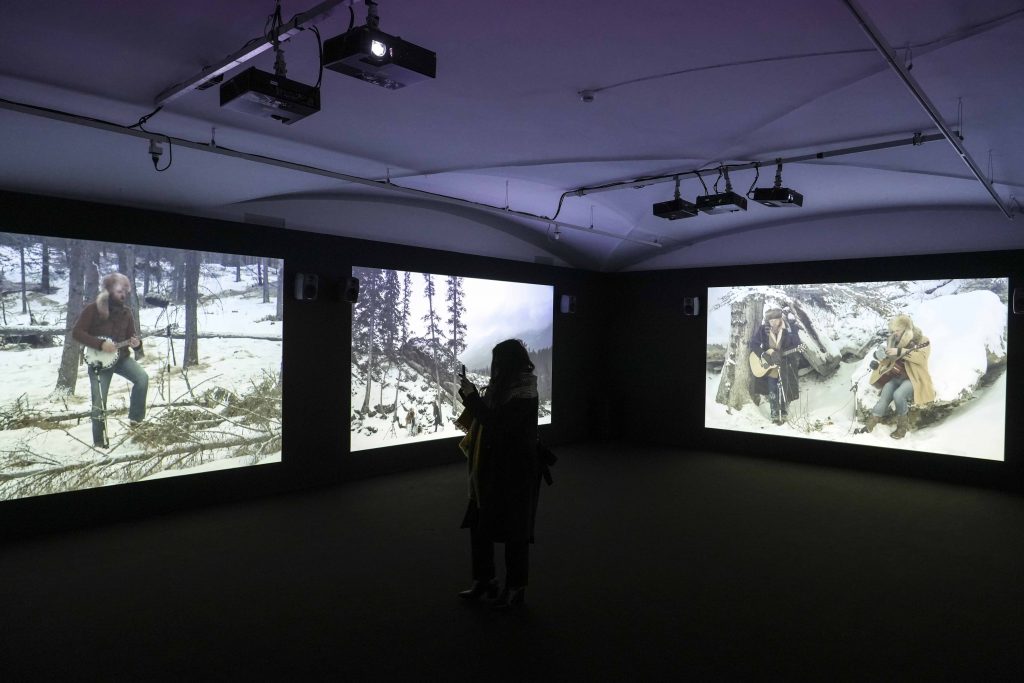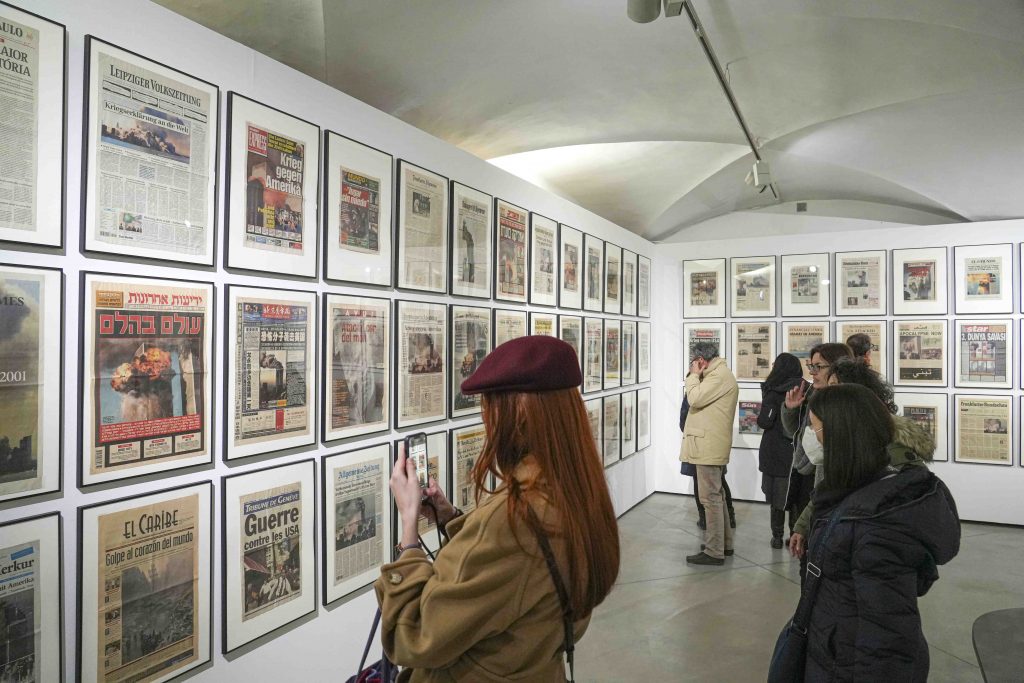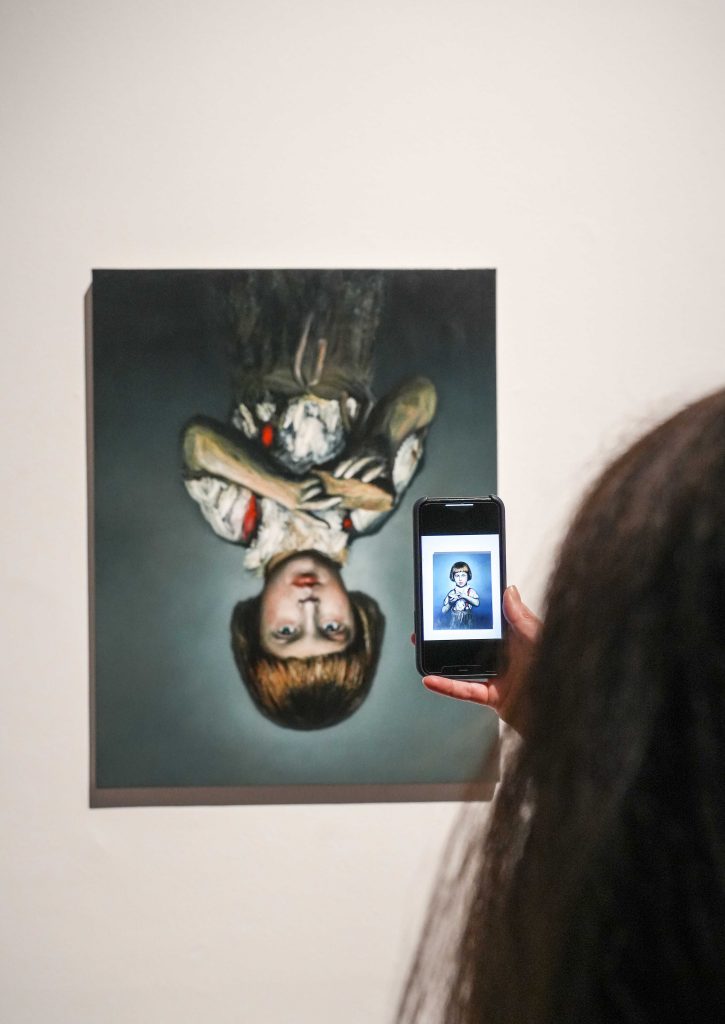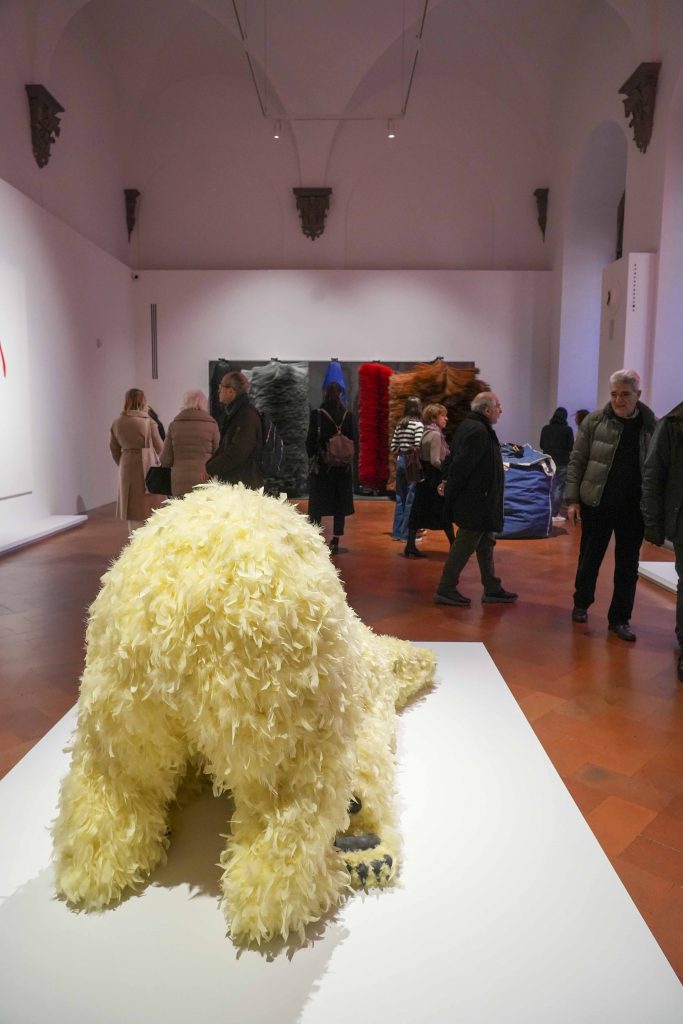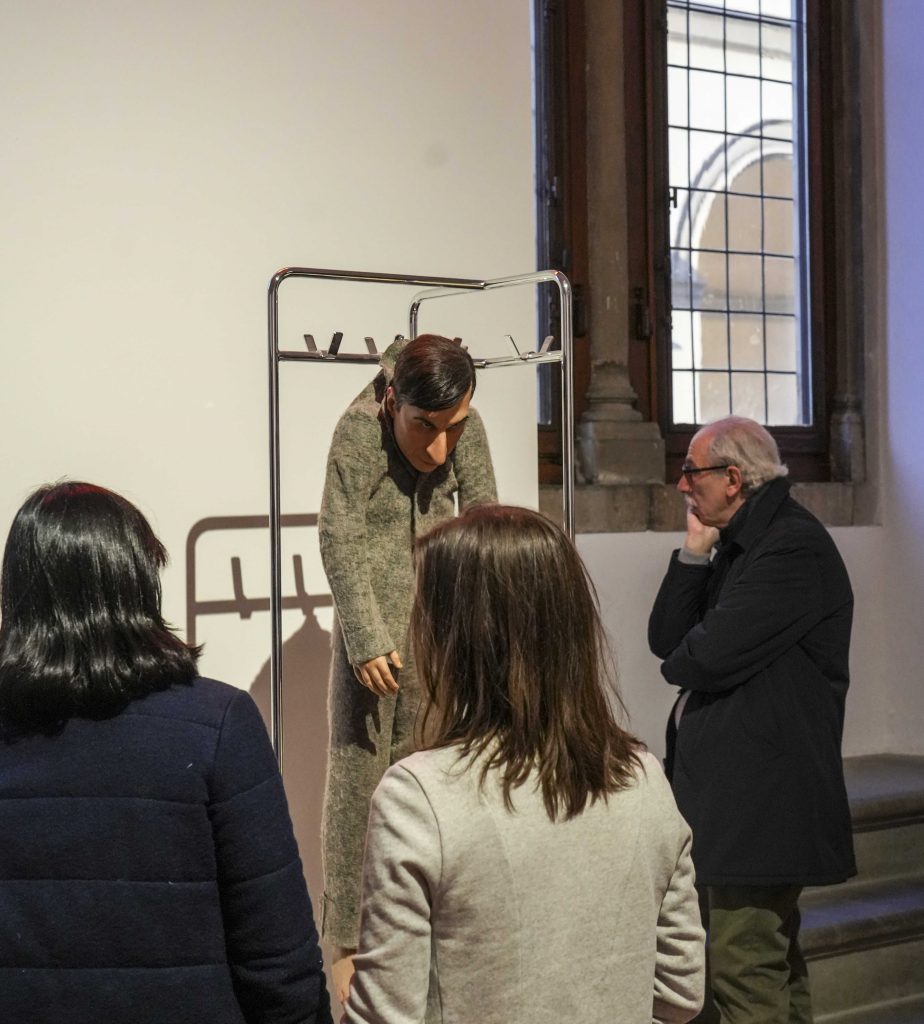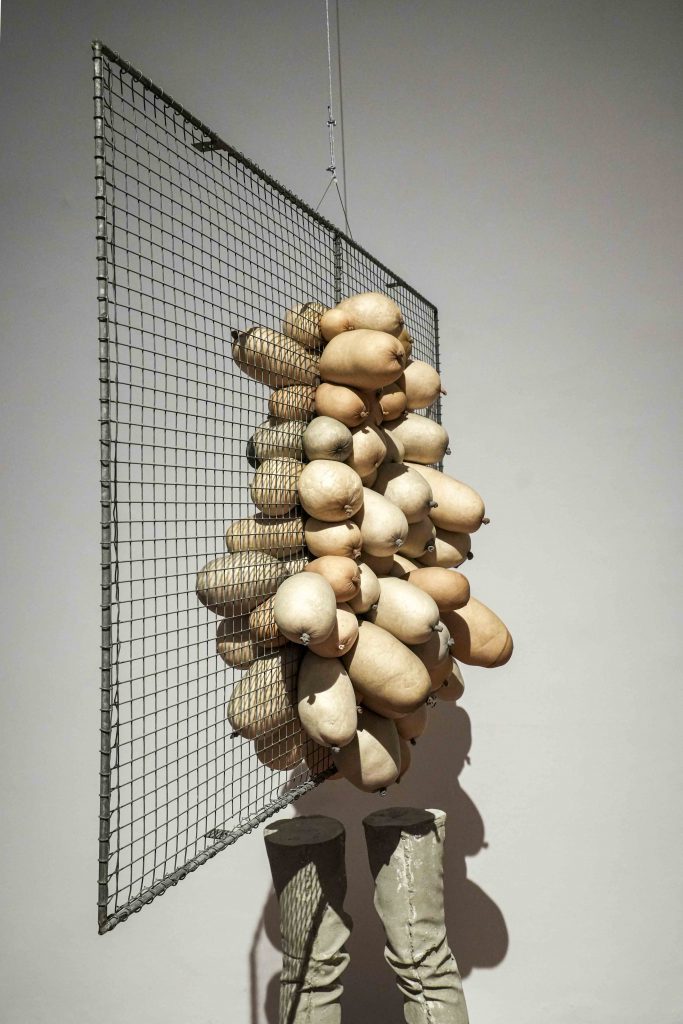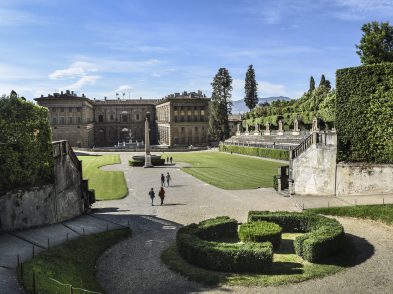Palazzo Strozzi’s new exhibition Reaching for the Stars has just opened and is accessible for a broad audience. As a viewer, look forward to a multi-sensory clash of colours, noises and movements, but with virtuous intention at its core.
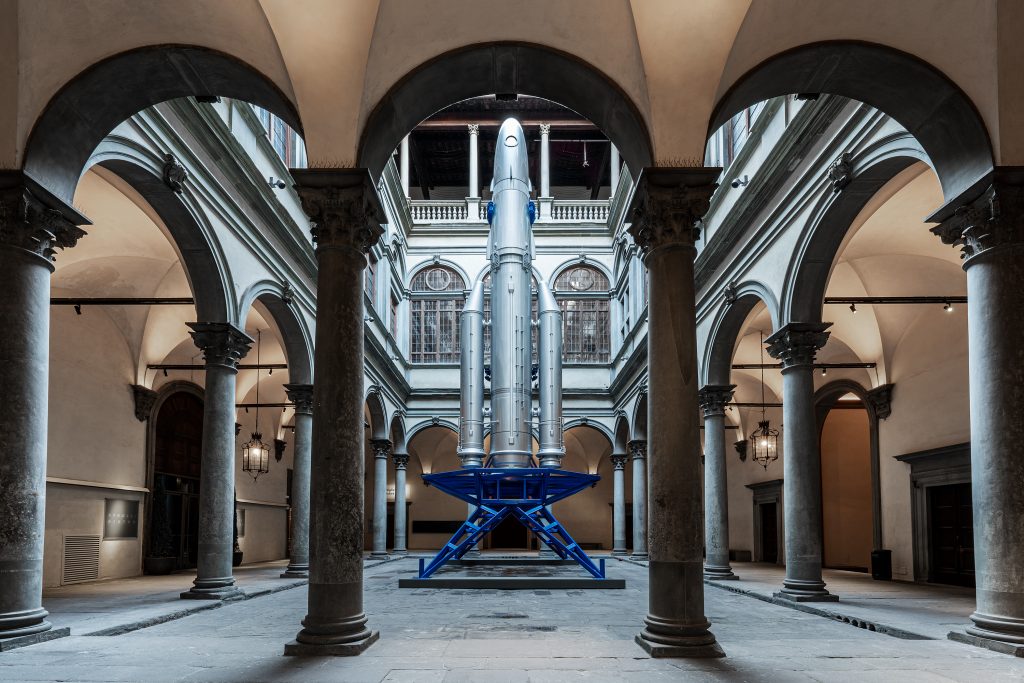
At first glance, Florence’s art scene doesn’t leave space for dark satire, sexual objectification and absurdist abstraction. The city is not associated with the ostentatious subversion of traditional art and what we consider “artistic” value systems. However, nestled in and amongst the Renaissance delights of the centro storico stands tall the equally impressive Palazzo Strozzi, which despite its 16th-century edifice has carved room for contemporary art exhibitions, replacing oil-on-canvas Venuses for formaldehyde-frozen sharks.
The palazzo’s newest exhibition, Reaching for the Stars, is no exception. Goshka Macuga’s gigantic metallic space-rocket supersedes the highest walls of the palazzo in such casual fashion that you have to do a double take. Look no further than the exhibition’s poster, which for the last month or so has sat uncomfortably on the walls of cafes and bars beside Florence’s dreaming spires and awe-inspiring domes. I’m sure I’m not alone when I say I have felt watched by Maurizio Cattelan’s upward stare, lifeless yet inviting, desperate yet sinister.
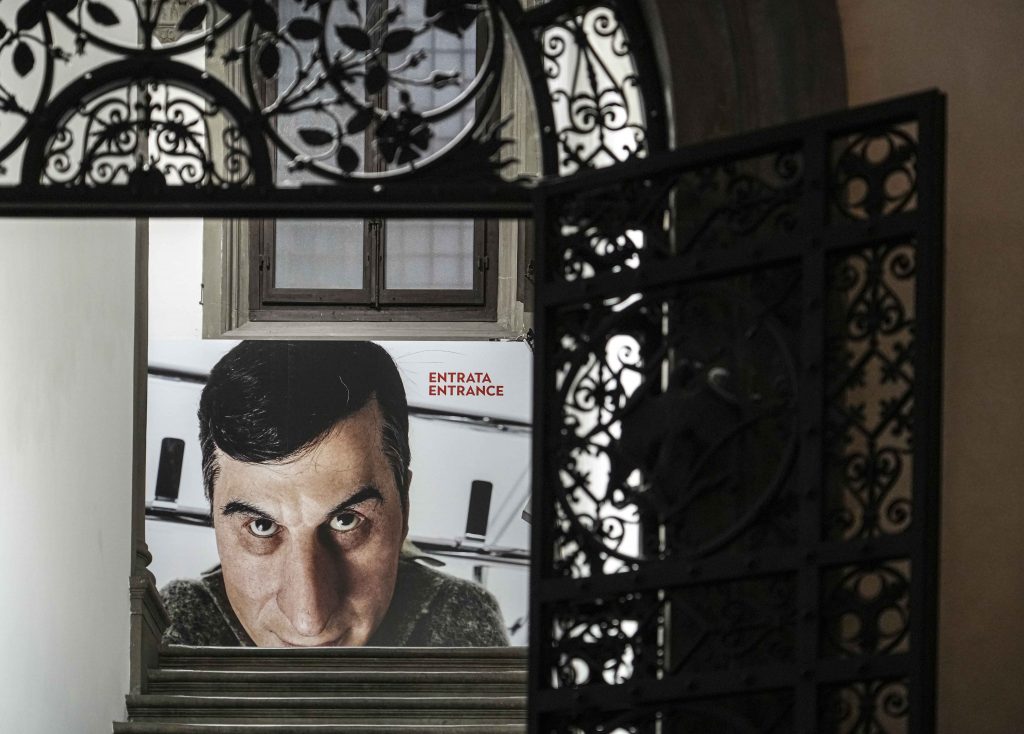
The product of a partnership with the Turin-based Fondazione Sandretto Re Rebaudengo, the exhibition collates the work of over 70 global contemporary artists from recent decades. The title, Reaching for the Stars, refers to the idea of “constellations” of pieces under different themes, movements and media across the halls of Palazzo Strozzi and in the Strozzina basement, celebrating 30 years of the Sandretto Re Rebaudengo Collection.
With a precedent of celebration and exploration of contemporary art and international collaboration, the curation here makes sense. Visitors are guided through eight rooms, with themes ranging from ‘God Save the Queen’, a nod to 1990s Young British Artists including Damien Hirst and Sarah Lucas, and ‘Made in Italy’ (no explanation required). Then there’s somewhat of a shift, as works are constellated under broad umbrellas of “bodies”, “identities”, “places”, “mythologies”, and so on. Aside from this slightly discordant sidestep from settings to abstract themes, which may feel a little didactic, the presentation generally makes for engaging and satisfying movement through the space, to the extent that we are left wanting more. The Strozzina’s unusual underground layout, a series of small corridors with branching side rooms, is navigated beautifully, taking advantage of the dark space to showcase the exhibition’s cinematographic ‘Stories’ and facilitating the impact of larger-scale pieces, in particular Hans-Peter Feldman’s four-walled 9/12 Front Page installation.
Indeed, it feels as much a celebration of the iconic space itself as the art showcased within it, in turn emphasising a message of Florence’s role on the contemporary art scene. At the press preview, Patrizia Sandretto Re Rebaudengo, president of the Sandretto Re Rebaudengo Foundation, commented that the collaboration with Palazzo Strozzi is to “create a living dialogue with the ancient and the public…This exhibition, which begins in the beautiful courtyard open to the city, reflects a value of sharing, in favour of the participation and accessibility of culture.” Arturo Galansino, director of the Palazzo Strozzi Foundation and the exhibition’s curator, attests to this relationship between Florence and its artistic audience. “To host a collection like this in Florence is to celebrate the values of patronage and art appreciation, in the city where great collecting was born.” Whether you are a contemporary art lover or not, Galansino says that Reaching for the Stars is to offer “a shared platform in which to stimulate accessibility, participation and experimentation.” In my mind, Palazzo Strozzi has achieved what it set out to do.
Galansino’s idea of “accessibility” is a sound description of what you can expect. The “Family Kit” provided for the exhibition is a tool devised for children aged five and above to engage with the artists both on site and at home (it’s also free of charge). Indeed, it is hard not to engage with a huge display of real butterflies tacked to the wall with sky-blue paint, or a life-size polar bear, whose fur consists of yellow feathers, rendering it a duckling. Understandably, these louder pieces occupy the start of the exhibition. Looking at Lara Favaretto’s motorized Gummo V, your hair is blown back from your face by the infrastructure taken from a car wash, resembling the tornado she aims to replicate. However, it is the smaller examples of political satire, sexual abstraction and dark humour that create points of interest personally as an onlooker. The “constellation” of female bodies and multicultural spaces feels a little restrictive; for me, it’s a shame that these pieces do not permeate a larger proportion of the exhibition and are not confined to these themes in particular. That being said, it is pleasing that Palazzo Strozzi remains alive to the controversy of contemporary art and its value in society, and in this way the rich range of pieces appeals to a more diverse audience.
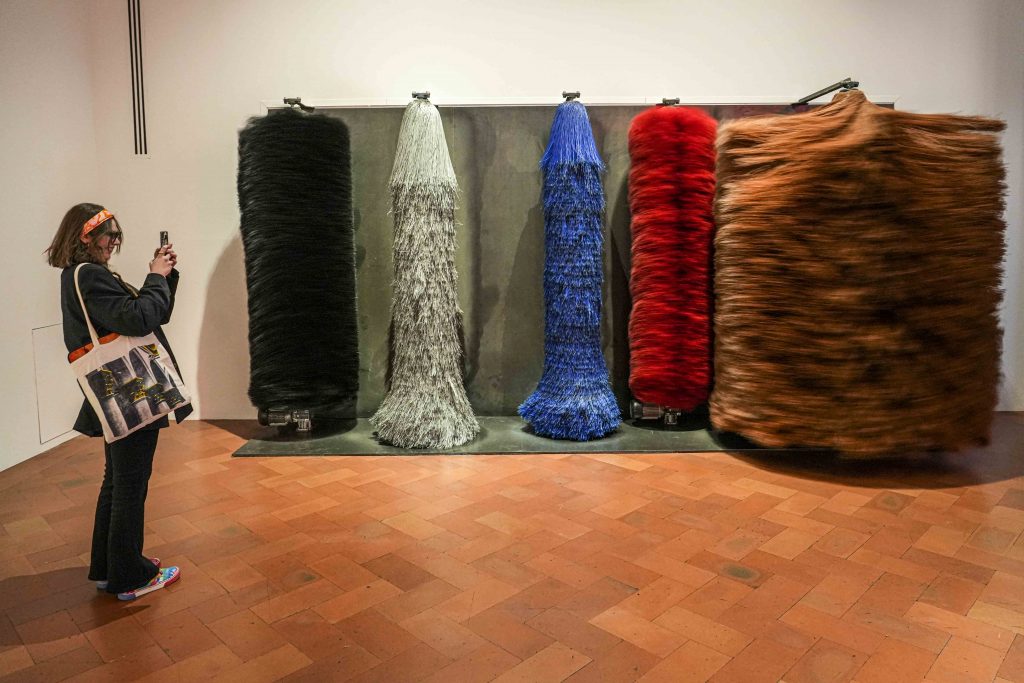
To be honest, I have never been much of a contemporary art fan. This is not (primarily) due to my thoughts on how “good” I think the pieces are, but rather the obscene amounts of money offered in exchange for them. Whilst, for me, the contemporary art metaverse (with the rise of virtual art experiences, it is certainly headed that way) will always be associated with gross displays of wealth, immune from the real world, Palazzo Strozzi’s exhibition attempts to link the two together. If you’re not attracted to taxidermy squirrels and giant bubble machines, which do, in fairness, offer their own comment and intrigue, I urge you to look towards Anish Kapoor’s 1000 Names and to the “Identities” (4) and “Bodies” (6) rooms. And then, in particular, to Simon Armitage’s oil depictions of modern-day Kenya and Sarah Lucas’ satirical comment on the female body and patriarchy through the medium of stuffed hosiery. The “Mythologies” room (7) is recommended for those who are searching for a refreshing shake-up of the classical sculptural body.
Balancing value with revenue is a painstaking formula to get right, but Palazzo Strozzi has worked to offset those potentially gimmicky, Instagrammable pieces with more sincere examples of what contemporary art is trying to do in 2023. This new exhibition is definitely worth a visit.
Palazzo Strozzi’s new exhibition Reaching for the Stars will be open from March 4 to June 18, 2023. Open daily 10am-8pm, until 11pm on Thursdays. Tickets start from 21 euro.

